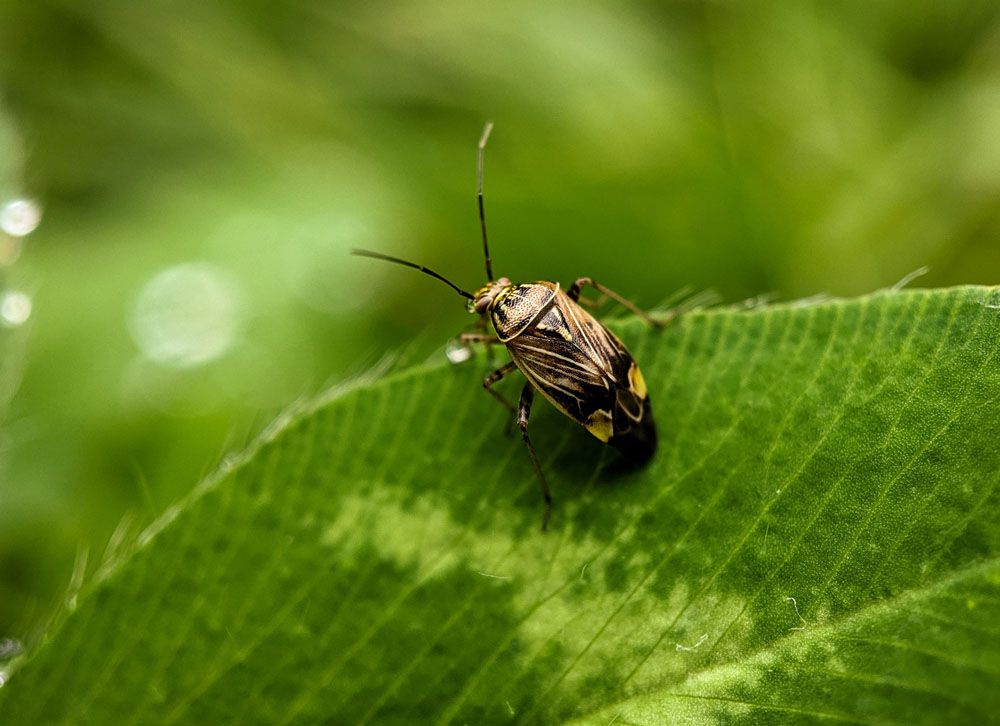
Tarished Plant Bug – Lygus lineolaris
Tarnished Plant Bug: Appearance, Territory, Damage and Life Cycle
Latin Name: Lygus Lineolaris
Appearance: The tarnished plant bug, Lygus Lineolaris, is a plant-feeding insect of the Miridae family. It has piercing-sucking mouthparts and has become a severe pest in North America on tiny fruits and vegetables. Adults are oval, flattened insects about 1/4 inch long, mostly copper-brown with some whitish-yellow markings, especially towards the end of each front wing edge, right before the wings become transparent and black colored. Nymphs are identical to adults except that they lack wings and are greenish with black markings on the segments below the head.
Hosts Plants: Lygus Lineolaris has at least 385 host plants reported. The tarnished plant bug, Lygus Lineolaris, feeds on a variety of commercially valuable plants, including herbaceous plants, vegetable crops, commercial flower plants, fruit trees, and nursery stock. Tarnished plant bugs have been found to feed on more than half of the cultivated plant species in the United States.
Territory: The Tarnished Plant Bug is an insect of the Miridae (true bugs) family. It is distributed across North America, with a range that stretches from northern Canada to southern Mexico, and it is a significant pest on tiny fruits and vegetables with a startling host range.
Damage Insect Cause: The tarnished plant bug is one of the most dangerous true bugs, capable of transmitting plant diseases. The bugs extract plant fluids with their needle-like mouthparts. Their feeding causes terminal growth to discolor or become deformed, decreasing plant development and making it seem unthrifty. Damaged buds’ leaves might be ragged and discolored. Flowers from damaged buds may fail to develop on one side or the entire bud may die.
Life History and Habits: Lygus Lineolaris overwinters as an adult in fields, forest borders, stream and ditch banks, and road rights-of-way under dead weeds, leaf litter, beneath tree bark, and rock heaps. Early in the spring, adults emerge and feed on newly developed buds and shoots. Between mid-April and late-June, the majority of nursery damage occurs. Composite host plants appear to be the only ones where oviposition occurs (non-conifers). Eggs are commonly placed in leaf petioles or at the base of leaf blades, however the preferred location varies according on the crop. In conifers, eggs are placed in flowers. Normally, eggs are laid one at a time, although at times, more than one egg is found at an oviposition location. 1 mm long yellowish-green nymphs emerge after seven to ten days and begin feeding. Nymphs go through five stages. The life cycle takes three to four weeks to complete. Each year, there are two to three generations. Adult population maxima typically occur in early July, early August, and early September.
